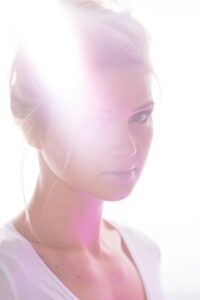LED light therapy is a non-invasive skin treatment that uses different wavelengths of light to improve various skin conditions, such as acne, wrinkles, scars, and wounds. LED stands for light-emitting diode, which is a type of device that emits light when an electric current passes through it. LED lights have been used for decades in various applications, such as displays, indicators, and signs. However, in recent years, they have also become popular as a cosmetic and medical treatment for the skin.
How does LED light therapy work?
LED light therapy @CellumaUK works by exposing the skin to different colors of light, each with a specific wavelength and energy level. These colors penetrate the skin at different depths and trigger biological processes that help the skin heal and rejuvenate.
The most common colors used in LED light therapy are red and blue, but other colors such as green, yellow, and near-infrared are also available. Each color has a different effect on the skin, depending on its wavelength and intensity.

Red light
Red light has a wavelength of about 630 to 700 nanometers (nm) and can penetrate the skin up to 10 millimeters (mm). Red light stimulates the production of collagen and elastin, which are proteins that give the skin its firmness and elasticity. Red light also reduces inflammation and increases blood circulation, which helps with wound healing and tissue repair. Red light can help improve the appearance of fine lines, wrinkles, scars, sun damage, and rosacea.
Blue light
Blue light has a wavelength of about 415 to 450 nm and can penetrate the skin up to 2 mm. Blue light targets the bacteria that cause acne, called Propionibacterium acnes (P. acnes). Blue light destroys these bacteria by creating reactive oxygen species (ROS) that damage their cell membranes and DNA. Blue light can help reduce acne breakouts, inflammation, and oil production.
What are the benefits of LED light therapy?
LED light therapy has many benefits for the skin, such as:
- It is painless and non-invasive
- It does not cause burns or damage to the skin
- It does not contain ultraviolet (UV) rays that can harm the skin
- It is suitable for all skin types and colors
- It can be used alone or in combination with other treatments
- It can be done at home or in a professional setting

How to use LED light therapy?
LED light therapy can be done at home or in a professional setting, such as a dermatologist’s office or a spa. The procedure may vary depending on the type of device, color of light, and condition being treated.
In general, LED light therapy involves:
- Cleansing your face and removing any makeup or products
- Applying a gel or serum to your face if recommended by your provider or manufacturer
- Wearing protective eyewear to shield your eyes from the bright lights
- Placing the device over your face or holding it close to your skin
- Turning on the device and selecting the desired color and intensity of light
- Exposing your skin to the light for a specified amount of time, usually between 10 to 30 minutes
- Turning off the device and removing it from your face
- Applying moisturizer or sunscreen to your face if needed






